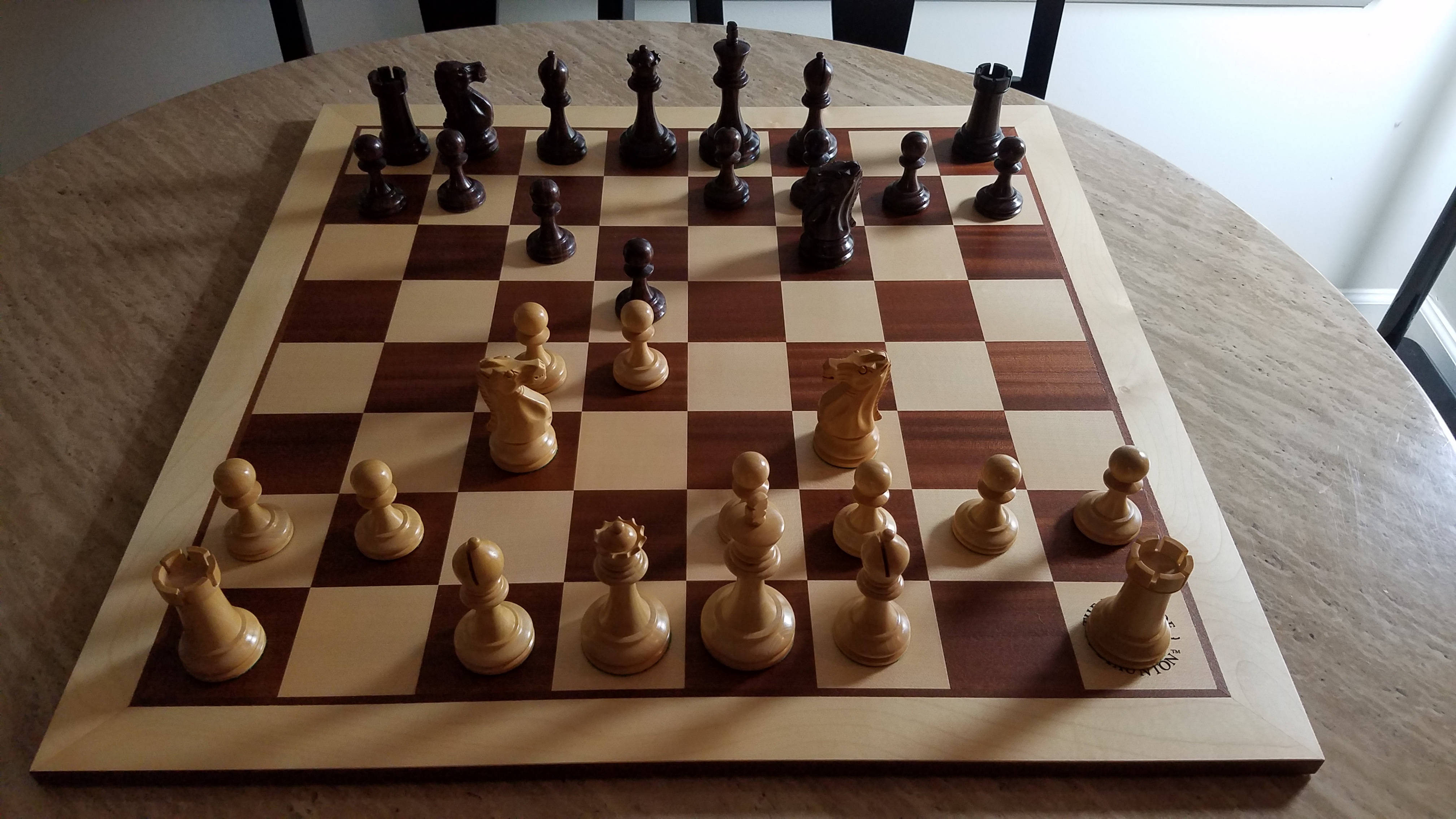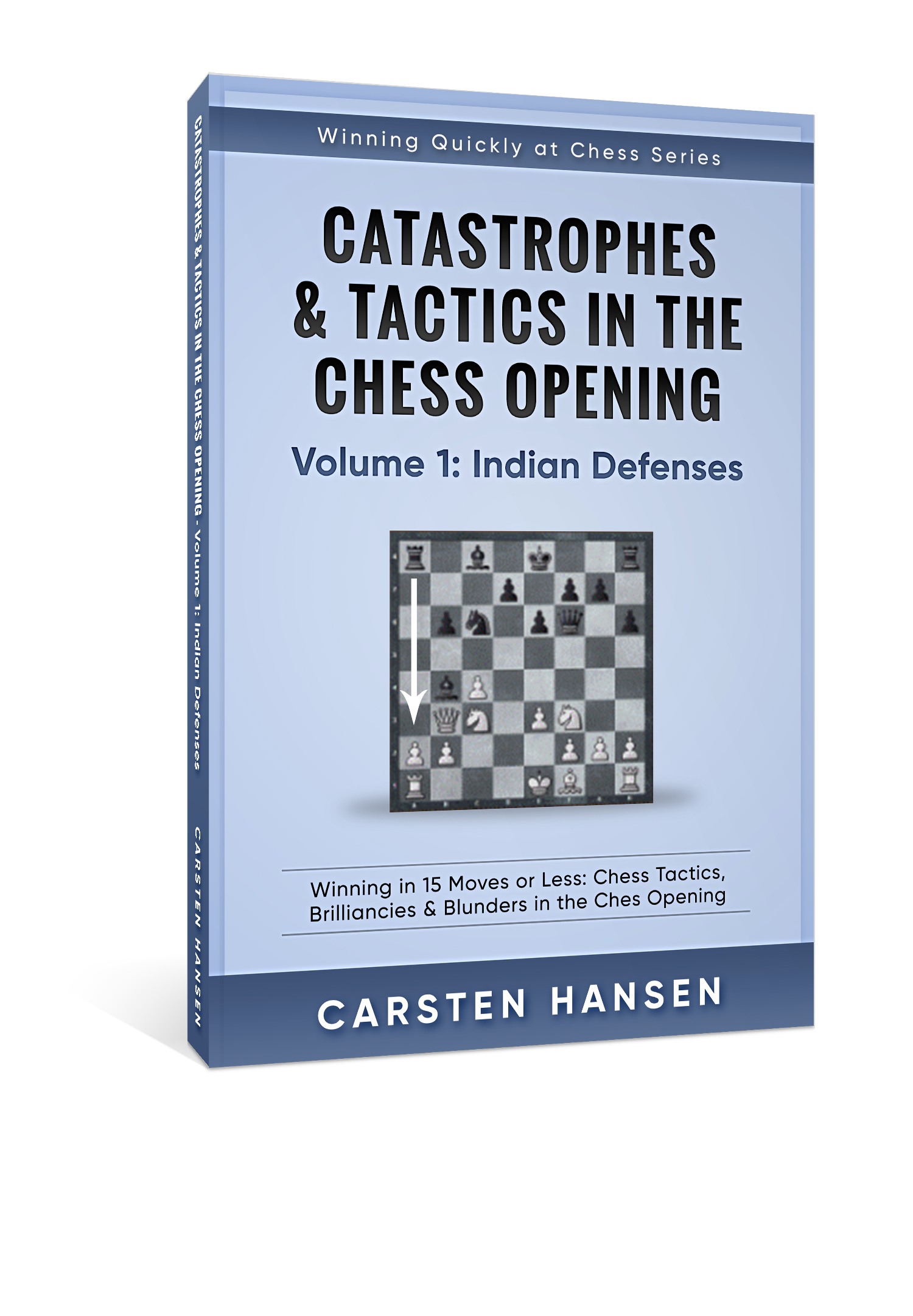S.B.Hansen (2571) – J.V.Ferreira (2427) [D15]
16th Individual European Ch, Jerusalem (9), 05.03.2015
[Carsten Hansen]
1 Nf3 d5 2 d4 Nf6 3 c4 c6 4 e3 Bf5 5 Nc3 a6
This way of mixing the …a6 system with the …Bf5 set-up is not the best, although played on more than one occasion by Magnus Carlsen and other very strong grandmasters.
6 Bd2!?
6 Qb3 is a key alternative.
6…h6
6…e6 is the key alternative, but White has also scored well in that line.
7 cxd5 cxd5 8 Ne5 e6 9 Qb3 Ra7 10 Rc1 Nbd7
What is White’s most challenging move for Black to meet?
It should be said that Black’s alternatives are not that good, e.g. 10…Bd6 11 Qa4+ Nc6 (11…Nbd7? 12 Nb5 wins for White) 12 Nxc6 bxc6 13 Qxc6+ is obviously better for White.
10…Be7 similarly runs into 11 Qa4+.
11 Bb5!?
This is clearly the most problematic move for Black to face. The alternatives are:
11 Nxd7 Nxd7 12 Ne2 (or 12 Na4 Be7 13 Bb4 0–0 14 Bxe7 Qxe7 15 Nb6 Nxb6 16 Qxb6 Raa8 17 Be2 , and a draw was already agreed upon, ½–½, Blagojevic-Ivanisevic, Budva 2003, but only Black can be better, e.g. 17…Rfc8 18 0–0 Bc2 and Black grabs hold of the initiative) 12 ..Nb8 13 Nf4 Bd6 14 Bb4 Bxb4+ 15 Qxb4 Nc6 16 Qc5 Ra8, and Black has equalized, Radjabov-Morozevich, Moscow 2002.
11 Na4 has also been tried: 11…Be7! is Black’s best option, leaving White with at most a tiny edge after (11…Nxe5? loses on the spot: 12 dxe5 Nd7 13 Nb6! Nxb6 (or 13 ..Qxb6 14 Rc8+ Ke7 15 Bb4+, and it is game over for Black) 14 Ba5, and Black is completely toast in Kachiani Gersinska-Ionescu Brandis, Istanbul 2003) 12 Bd3 Bxd3 13 Nxd3 0–0 14 f3 b5 15 Nac5 Bd6 16 Bb4 Nb6 17 Ba5 Nfd7.
11 Qa4 is efficiently met by 11 ..Ra8! , and White has nothing.
11…Bd6
11…Be7!? 12 Bxd7+ Nxd7 13 Nxd7 Qxd7 14 Na4 Qb5 (14 ..Bd8!? 15 Bb4 b6 has been suggested as playable for Black by Huebner, and that seems like a fair assumption, e.g. 16 0–0 f6 17 f3 Kf7 , and Black has solved his opening problems) 15 Nb6 Qxb3 (or 15 ..Bd8 16 Nc8 Qxb3 17 axb3 Ra8 18 Nd6+ Ke7 19 Nxb7 Bd3 20 Bb4+ Kf6 21 Nxd8 Rhxd8 22 Kd2 Bb5 is by no means easy for White to win, but Black is clearly on the defensive and will likely be so for many moves to come, Lekic-Mirzoev, Rethymno 2014) 16 axb3 a5 17 Nc8 Ra6 18 Nxe7 Kxe7 19 Rc7+ Kf6 20 Rxb7 a4 21 bxa4 Rxa4 22 Ke2±, and White obviously has all the chances of winning this endgame, although it by no means will be an easy task, N.Pert-Tippleston, Swansea 2006.;
11…axb5?? 12 Nxb5 obviously just loses for Black.
11…Qb8? 12 Bxd7+ Nxd7 13 Nxd7 (13 Qa4!? b5 14 Nxb5! axb5?! 15 Qxa7 Qxa7 16 Rc8+ Ke7 17 Nc6+ is an easy win for White) 13…Kxd7 14 Nxd5 b5 15 Ba5 Rb7 16 Nb4 Bxb4+ 17 Qxb4 Rc8 18 0–0 Rc4 19 Qd2, and with an extra pawn and safer king, White has a large advantage, which he eventually converted into a win, Ezat-Ranaivoharisoa, Tripoli 2009.
12 Bxd7+ Nxd7 13 Nxd7
What is Black’s best move?
13…Qxd7?
This is not it! It looks like the natural move for Black, but it allows White time to give Black serious problems on the dark squares.
The answer is 13…Kxd7!, which you should not be ashamed if you missed. Even Magnus Carlsen has missed this move. White is still better, but only marginally so: 14 Na4 (Another approach is 14 Ne2 to make room for the bishop on b4, targeting the dark squares: 14…b5 15 0–0 Qb8 16 Ng3 Bg6 17 Bb4 Rc8 18 Bc5 Rac7 19 Bxd6 Kxd6 20 Qb4+ Kd7 21 Rc5 was played in Laurent-Berthelot, Guingamp 2004, and now Black should have considered the active 21…a5!? 22 Rxc7+ Rxc7 23 Qxa5 b4 24 Qa4+ Ke7, and Black should have sufficient compensation for the pawn) 14…b5 15 Nc5+ Ke7 16 f3 (16 a4?! Qb8 17 a5 Rc8 18 Bb4 Kf8 19 Kd2 Kg8 20 Nd3 Bxb4+ 21 Nxb4 Rxc1 22 Rxc1 Qxh2, and it is pretty clear that things have gone wrong for White, Vaganian-Frolov, Togliatti 2003) 16 ..Re8 (the text is logical, but 16…Kf8 may actually be better, e.g. 17 0–0 Kg8 followed by …Kh7, and Black has equalized.) 17 e4 dxe4 (17…Bxc5? is a bad idea: 18 Rxc5 (in ChessBase Magazine, Huebner only gives 18 dxc5 dxe4 19 fxe4 Bxe4 20 c6 f5 21 Qg3 Kf7 22 c7 Qd7 23 Bf4 as risky for Black, but there are several improvements on this line, e.g. 19…Kf8! and 19 c6!?) ) 18 fxe4 Bg6 19 e5 (19 Qe3 Qa8 20 0–0 Bxc5 21 e5 Qe4 leads to equality according to Huebner) 19 ..Bxc5 20 Bb4 (20 dxc5?! Kf8! is actually pleasant for Black) 20 ..Kd7 21 Bxc5 (21 dxc5? Qh4+ 22 g3 Qe4+ 23 Kf2 Qd4+ is better for Black) 21 ..Qh4+ 22 g3 Qe4+ 23 Kf2 Qf5+ 24 Qf3 , and a draw was agreed upon in P.H.Nielsen-S.B.Hansen, Malmo 2003 – no wonder White in our main game was all locked in on the theory. But what would he have played against his own 13…Kxd7? That’s an interesting question.
14 Na4! Bc7
The alternative is 14…0–0 15 Nb6, and now:
15…Qd8
was Magnus Carlsen’s less than fortunate choice: (15…Qb5 is possibly best, although 16 Qxb5 axb5 17 Nc8 obviously is not ideal for Black, but even so 17…Rxc8 18 Rxc8+ Kh7 19 Rd8 (19 a3 b4!) 19 ..Be7 20 Rd7 Rxa2 21 Ke2 Bf8 22 Rxf7 Kg8 23 Rxb7 Rxb2 will require some technique for White to win, but he nevertheless should) 16 Nc8! (16 0–0 a5! (16…Bc7 17 Ba5 Qd6 18 g3 leaves White with a pull) 17 Nc8 Ra8 18 Nxd6 Qxd6 White’s advantage disappears 19 Qb5 Qa6 20 Qxa6 Rxa6 21 Rc7 Rb6 22 Bc3 a4 with no more than a small plus for White.) 16…Qxc8 (or 16…Ra8 17 Nxd6 Qxd6 18 Bb4, and White wins) 17 Rxc8 Rxc8 18 Qb6! (As indicated by Rogozenco, it is less accurate for White to play 18 0–0 Rc6 19 Rc1 Rxc1+ 20 Bxc1 b5 “allowing Black to activate the pieces and reach a perfectly playable position”, but 19 Bc3 followed by a2–a3 and f2–f3 is certainly more challenging) 18…Bb8 19 0–0 Kh7 20 Rc1!, and White is winning, Ponomariov-Carlsen, Wijk aan Zee 2007.
14…b5? 15 Nb6 loses on the spot.
14…Qd8 15 Bb4 (15 Nb6 Bc7 16 Qa4+ transposes to our main game) 15 ..0–0 16 Bxd6 Qxd6 17 Qb6 Qxb6 18 Nxb6 a5 19 Rc7 left Black with a very uncomfortable ending which White eventually won, Mchedlishvili-Raznikov, Warsaw 2013.
15 Nb6 Qd8 16 Qa4+ Kf8?
What is White’s strongest move?
As indicated by Rogozenco in ChessBase Magazine, Black’s best is 16…Ke7 17 Ba5 Bxb6 18 Qb4+ Qd6 19 Qxb6 Qxb6 20 Bxb6 Raa8 21 Rc7+ Kf6 22 Kd2 with a difficult endgame for Black. White obviously has control over the c-file, has a rook nicely situated on the 7th rank as well as having relatively easy access to the queenside with his king. Black on the other side has a remarkably ineffective king and bishop. A possible continuation is 22…Rhc8 (the exchange of a pari of rooks will likely help Black’s defensive task in contrast to allowing White to play Rhc1, Rd7 followed by Rcc7) 23 Rhc1 Rxc7 24 Rxc7 Rb8 25 b4 (White should not let himself get tempted to win a pawn with 25 Ba7 because of 25 ..Re8! 26 Rxb7 Re7, and all of a sudden Black has a pure opposite-colored bishop endgame that he should be able to defend) 25…g5 26 a4 h5, and now: 27 Kc3 appears to be the only chance to win: (27 a5 g4 28 b5 axb5 29 Ba7 (29 Kc3!? b4+ 30 Kxb4 Bd3 31 Ba7 Re8 32 Rxb7 Re7 33 Rxe7 Kxe7 34 Kc5 Kd7 35 Kb6 Kc8 36 g3 Bc2 37 a6 Bd1 38 Ka5 Be2 , and White will not get anywhere) 29…Ra8! (Now, on the other hand, Black can no longer use the drawing method from before: 29…Re8? 30 Rxb7 Re7 31 a6 , and White wins) 30 Rxb7 b4 31 Bb6 Be4 32 g3 Kg6 33 Bc7 Ra6 , and White still has some work to do if he is to win at all) However, 27…e5!? (27…g4 28 g3 Be4 29 b5 axb5 30 axb5 wins for White; 27…Be4 28 f3 Bf5 29 b5 axb5 30 axb5 Ra8 31 Rxb7 (Rogozenco) and White is winning.) 28 Kb3 exd4 29 Bxd4+ Ke6 30 Ba7 Rd8 31 Rxb7 d4 32 Bxd4 Be4 33 Rc7 Bxg2 34 b5 axb5 35 axb5 with some winning chances for White.
17 Qd7! Qxd7 18 Nxd7+ Ke7 19 Rxc7 Kd6 20 Ba5
And with everything guarded, there is nothing left for Black but to resign.
1–0






